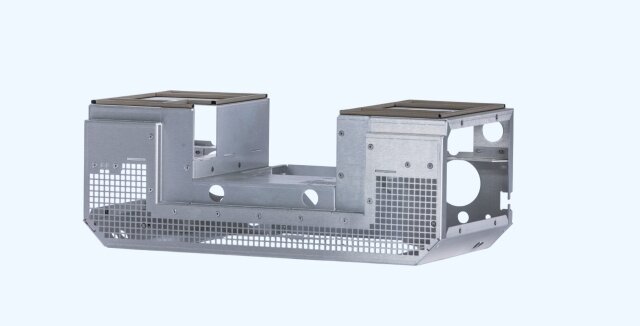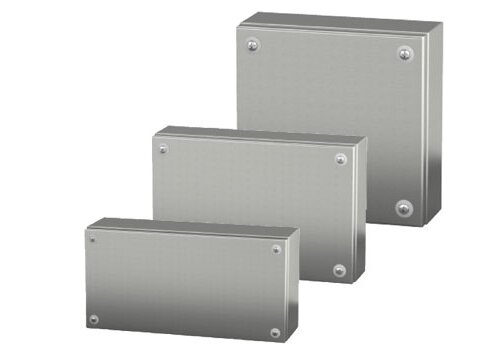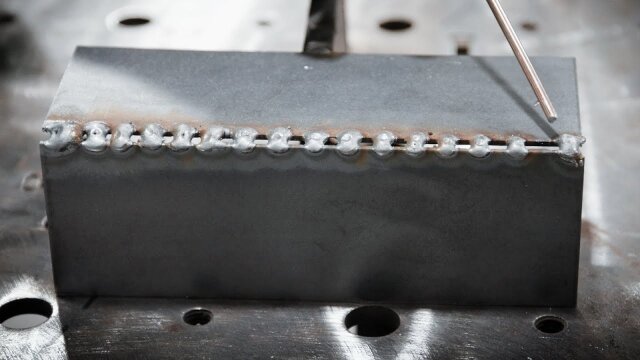The way we join metal parts is changing quickly. Engineers and manufacturers often face a tricky question: which welding method best fits their job? Many people know about laser welding and TIG welding. Each has its pros and cons. This choice affects more than just the welding process. It can influence the final product’s quality, the cost to make it, and how fast it gets delivered.
Laser welding uses a focused beam of light to melt and join metal. TIG welding uses a tungsten electrode and gas to form a weld. Laser welding is fast, clean, and suitable for automation. TIG welding is slow but precise and flexible. The best choice depends on the type of job, material, and the need for speed versus control.
Both laser and TIG welding create strong, dependable welds. But they work better for different types of projects. Want to figure out which one suits your needs better? Let’s take a closer look.
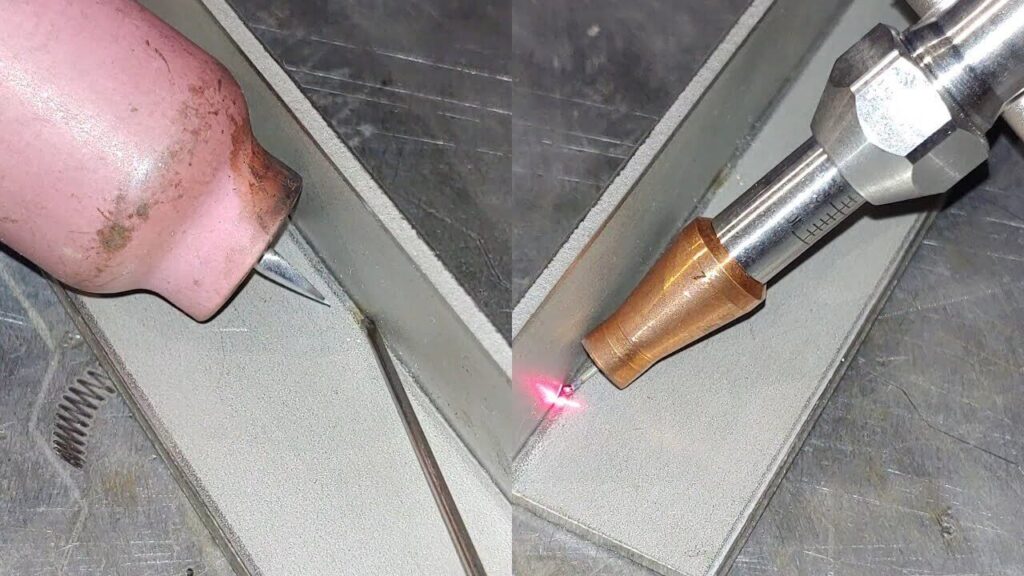
Basics of Laser Welding
Laser welding joins metals using a focused beam of light. It’s fast, precise, and suitable for automated production. Let’s examine how it works and where it shines.
How Laser Welding Works?
Laser welding joins metal by using a powerful beam of light. The beam heats a small area until the metal melts and bonds together. Because the heat is so focused, it creates deep, narrow welds with little distortion.
There are two main types of beams: continuous and pulsed. Continuous beams are used for longer or thicker welds, while pulsed beams are better for smaller, delicate parts.
The process is non-contact. That means the laser never touches the metal. It only delivers heat to the surface. This makes it very clean and accurate.
Main Parts of a Laser Welding System
A typical setup includes:
- Laser source: Usually a fiber or CO₂ laser that creates the beam.
- Optics: Lenses and mirrors that guide and focus the beam.
- Part holder: A fixture that keeps the metal pieces in place.
- Shielding gas: Often argon or helium, used to protect the weld from the air.
- Control system: Software that manages beam direction and power.
These components work together to ensure a consistent weld. The system is often fully automated, especially in high-volume production.
Best Materials for Laser Welding
Laser welding works well with metals that spread heat easily and don’t reflect the laser too much. Good choices include:
- Stainless steel
- Mild steel
- Titanium
- Aluminum (with proper settings)
- Nickel-based alloys
Highly reflective metals like copper are harder to weld. They bounce back much of the laser energy, so welding them often needs more power or a different type of laser.
Thin materials are ideal. Thicker parts can still be welded, but may need more than one pass or added filler wire.
Pros and Cons of Laser Welding
What’s great about it:
- High-speed welding
- Clean, narrow welds
- Low heat damage
- Easy to automate
- Smooth finish, often no need for extra cleanup
What to watch out for:
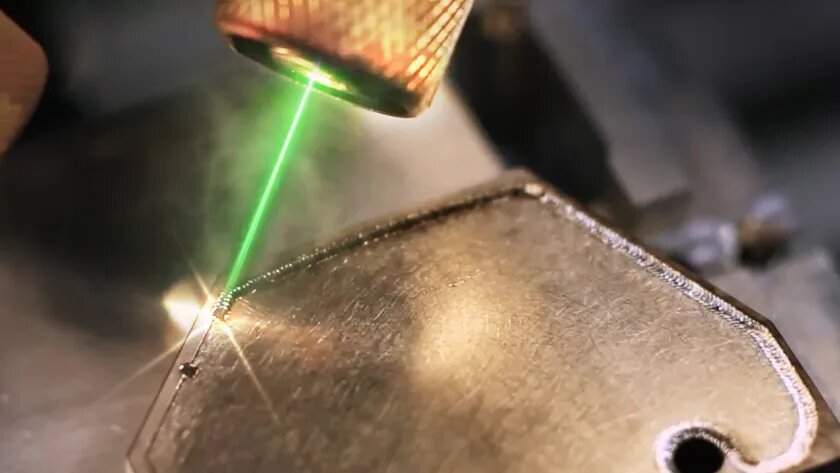
Basics of TIG Welding
TIG welding creates precise, high-quality welds using an electric arc and hand-fed filler material. It’s the go-to method for critical joints where appearance and strength matter.
How TIG Welding Works?
TIG stands for Tungsten Inert Gas welding. It uses a tungsten electrode that doesn’t melt. Instead, it creates an arc that heats and melts the metal. If extra material is needed, a filler rod is added by hand.
The weld area is protected by a gas shield—usually argon—that keeps out air and prevents oxidation. This helps keep the weld clean and strong.
TIG welding gives you a lot of control over the heat and filler. It’s a slower process than other methods, but the welds are robust and neat. It’s usually done by hand and takes skill to do well.
Main Parts of a TIG Welding System
A standard TIG setup includes:
- Power source: Provides either AC or DC. AC is used for aluminum, DC for steel.
- TIG torch: Holds the tungsten electrode and supplies the shielding gas.
- Filler rod: Manually added if needed for the weld.
- Shielding gas: Usually argon or a mix with helium.
- Foot pedal or hand control: Lets the welder adjust the heat during the job.
This setup gives the welder full control, which is why TIG is often chosen for detailed or high-spec work.
Best Materials for TIG Welding
TIG welding works well with a wide range of metals, including fragile ones. It’s also useful when joining two different metals. Common choices include:
- Stainless steel
- Mild steel
- Aluminum
- Copper
- Nickel alloys
- Magnesium
It’s ideal for precision jobs, clean finishes, or when weld appearance is essential.
Pros and Cons of TIG Welding
What’s good about it:
- Very high weld quality
- Complete control over heat and filler
- Clean welds without spatter
- Works excellently on thin metal
- Suitable for custom or detailed work
What to keep in mind:
- Slower than other welding methods
- Needs a skilled operator
- Not easy to automate
- Less effective for thick parts
- The setup can be more complex
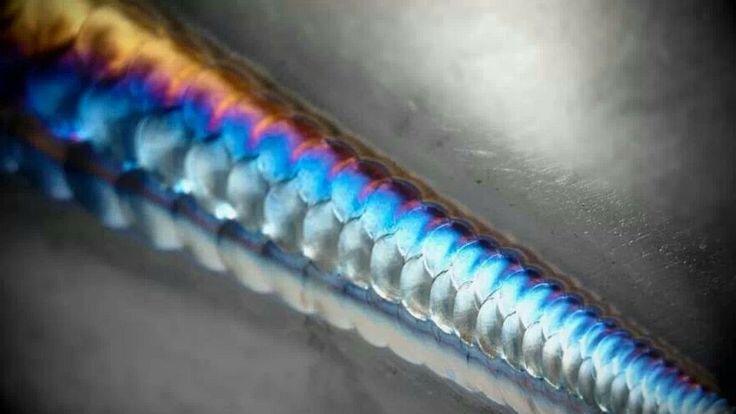
Laser Welding vs TIG Welding: Key Differences
Laser welding and TIG welding both join metal, but work very differently. Here’s a breakdown of how they compare in key areas.
Heat Source
Laser welding uses a focused beam of light to heat the metal. This beam targets a small spot and delivers intense heat. It melts the material quickly, creating deep and narrow welds.
TIG welding uses an electric arc from a tungsten electrode. The heat spreads over a wider area, and the operator often adds filler metal by hand.
Precision and Control
Laser welding is exact. Optics or CNC machines usually guide it, making it perfect for automated systems and tight-tolerance parts.
TIG welding gives the welder complete control. Heat, speed, and filler are all adjusted manually, which is great for parts that need a careful touch.
Welding Speed
Laser welding is much faster. It can complete welds in seconds and fits well in high-volume production.
TIG welding takes longer. The welder moves more slowly to guide the arc and filler properly. It’s a better fit for small batches or one-off parts.
Weld Quality and Appearance
Laser welding creates narrow, clean welds with little to no spatter. The heat is focused, so distortion is minimal. In many cases, no extra cleanup is needed. Welds are neat and consistent, especially when automated.
TIG welding also delivers excellent results—especially when done by a skilled welder. The finish is smooth and clean, with strong fusion. It’s often used when the weld will be seen and needs to look perfect.
Material Compatibility
Laser welding works best with metals that easily absorb heat from the laser. These include stainless steel, mild steel, titanium, and some types of aluminum. It struggles with shiny metals like copper, which reflect the laser.
TIG welding is more flexible. It works with many metals, including stainless steel, aluminum, copper, magnesium, and special alloys. It’s perfect for thin or delicate parts.
Best Use Cases
Laser welding is ideal for high-speed, high-volume jobs. It’s widely used in industries like automotive, electronics, and medical. It’s perfect for thin parts, small joints, and precise patterns.
TIG welding is used for smaller runs, custom work, or repairs. It’s also used in aerospace, pipelines, and detailed fabrication jobs. TIG welding handles difficult welds and allows more hands-on control.
Cost Factors
Laser welding machines cost more upfront. They require advanced equipment and trained staff. But once set up, they run fast and can reduce labor costs.
TIG welding machines cost less and are easier to set up. However, the process is slower and requires more manual work, which can increase costs for large batches.
Laser Welding vs TIG Welding: Choosing the Right Welding Method
Picking between laser and TIG welding depends on your project goals. Each method brings clear benefits, but one will usually fit better based on your needs.
Laser welding is the right choice if:
- You need fast production with consistent quality
- The parts are thin and well-prepared
- You’re running automated or high-volume jobs
- Minimal heat distortion and cleanup are key
TIG welding makes more sense when:
- You need high control over the weld
- Appearance and precision matter
- The job involves thin, complex, or mixed materials
- You’re working on small runs or custom work
Conclusion
Laser welding and TIG welding each serve different needs. Laser welding is fast, clean, and perfect for automation. It works well in high-volume production with tight tolerances. TIG welding is slower but gives complete control. It’s best for detailed work, custom parts, and delicate materials.
Do you need help choosing the right welding process for your metal parts? Contact our team for expert support and fast, reliable welding solutions tailored to your project.
Hey, I'm Kevin Lee

For the past 10 years, I’ve been immersed in various forms of sheet metal fabrication, sharing cool insights here from my experiences across diverse workshops.
Get in touch

Kevin Lee
I have over ten years of professional experience in sheet metal fabrication, specializing in laser cutting, bending, welding, and surface treatment techniques. As the Technical Director at Shengen, I am committed to solving complex manufacturing challenges and driving innovation and quality in each project.
Related Resource
Metal Enclosure Materials Compared: Stainless Steel or Aluminum?
- Equipment is expensive
- Parts need to fit together very precisely
- Not the best choice for thick or shiny metals
- Gaps or misalignment can cause problems

Basics of TIG Welding
TIG welding creates precise, high-quality welds using an electric arc and hand-fed filler material. It’s the go-to method for critical joints where appearance and strength matter.
How TIG Welding Works?
TIG stands for Tungsten Inert Gas welding. It uses a tungsten electrode that doesn’t melt. Instead, it creates an arc that heats and melts the metal. If extra material is needed, a filler rod is added by hand.
The weld area is protected by a gas shield—usually argon—that keeps out air and prevents oxidation. This helps keep the weld clean and strong.
TIG welding gives you a lot of control over the heat and filler. It’s a slower process than other methods, but the welds are robust and neat. It’s usually done by hand and takes skill to do well.
Main Parts of a TIG Welding System
A standard TIG setup includes:
- Power source: Provides either AC or DC. AC is used for aluminum, DC for steel.
- TIG torch: Holds the tungsten electrode and supplies the shielding gas.
- Filler rod: Manually added if needed for the weld.
- Shielding gas: Usually argon or a mix with helium.
- Foot pedal or hand control: Lets the welder adjust the heat during the job.
This setup gives the welder full control, which is why TIG is often chosen for detailed or high-spec work.
Best Materials for TIG Welding
TIG welding works well with a wide range of metals, including fragile ones. It’s also useful when joining two different metals. Common choices include:
- Stainless steel
- Mild steel
- Aluminum
- Copper
- Nickel alloys
- Magnesium
It’s ideal for precision jobs, clean finishes, or when weld appearance is essential.
Pros and Cons of TIG Welding
What’s good about it:
- Very high weld quality
- Complete control over heat and filler
- Clean welds without spatter
- Works excellently on thin metal
- Suitable for custom or detailed work
What to keep in mind:
- Slower than other welding methods
- Needs a skilled operator
- Not easy to automate
- Less effective for thick parts
- The setup can be more complex

Laser Welding vs TIG Welding: Key Differences
Laser welding and TIG welding both join metal, but work very differently. Here’s a breakdown of how they compare in key areas.
Heat Source
Laser welding uses a focused beam of light to heat the metal. This beam targets a small spot and delivers intense heat. It melts the material quickly, creating deep and narrow welds.
TIG welding uses an electric arc from a tungsten electrode. The heat spreads over a wider area, and the operator often adds filler metal by hand.
Precision and Control
Laser welding is exact. Optics or CNC machines usually guide it, making it perfect for automated systems and tight-tolerance parts.
TIG welding gives the welder complete control. Heat, speed, and filler are all adjusted manually, which is great for parts that need a careful touch.
Welding Speed
Laser welding is much faster. It can complete welds in seconds and fits well in high-volume production.
TIG welding takes longer. The welder moves more slowly to guide the arc and filler properly. It’s a better fit for small batches or one-off parts.
Weld Quality and Appearance
Laser welding creates narrow, clean welds with little to no spatter. The heat is focused, so distortion is minimal. In many cases, no extra cleanup is needed. Welds are neat and consistent, especially when automated.
TIG welding also delivers excellent results—especially when done by a skilled welder. The finish is smooth and clean, with strong fusion. It’s often used when the weld will be seen and needs to look perfect.
Material Compatibility
Laser welding works best with metals that easily absorb heat from the laser. These include stainless steel, mild steel, titanium, and some types of aluminum. It struggles with shiny metals like copper, which reflect the laser.
TIG welding is more flexible. It works with many metals, including stainless steel, aluminum, copper, magnesium, and special alloys. It’s perfect for thin or delicate parts.
Best Use Cases
Laser welding is ideal for high-speed, high-volume jobs. It’s widely used in industries like automotive, electronics, and medical. It’s perfect for thin parts, small joints, and precise patterns.
TIG welding is used for smaller runs, custom work, or repairs. It’s also used in aerospace, pipelines, and detailed fabrication jobs. TIG welding handles difficult welds and allows more hands-on control.
Cost Factors
Laser welding machines cost more upfront. They require advanced equipment and trained staff. But once set up, they run fast and can reduce labor costs.
TIG welding machines cost less and are easier to set up. However, the process is slower and requires more manual work, which can increase costs for large batches.
Laser Welding vs TIG Welding: Choosing the Right Welding Method
Picking between laser and TIG welding depends on your project goals. Each method brings clear benefits, but one will usually fit better based on your needs.
Laser welding is the right choice if:
- You need fast production with consistent quality
- The parts are thin and well-prepared
- You’re running automated or high-volume jobs
- Minimal heat distortion and cleanup are key
TIG welding makes more sense when:
- You need high control over the weld
- Appearance and precision matter
- The job involves thin, complex, or mixed materials
- You’re working on small runs or custom work
Conclusion
Laser welding and TIG welding each serve different needs. Laser welding is fast, clean, and perfect for automation. It works well in high-volume production with tight tolerances. TIG welding is slower but gives complete control. It’s best for detailed work, custom parts, and delicate materials.
Do you need help choosing the right welding process for your metal parts? Contact our team for expert support and fast, reliable welding solutions tailored to your project.
Hey, I'm Kevin Lee

For the past 10 years, I’ve been immersed in various forms of sheet metal fabrication, sharing cool insights here from my experiences across diverse workshops.
Get in touch

Kevin Lee
I have over ten years of professional experience in sheet metal fabrication, specializing in laser cutting, bending, welding, and surface treatment techniques. As the Technical Director at Shengen, I am committed to solving complex manufacturing challenges and driving innovation and quality in each project.


